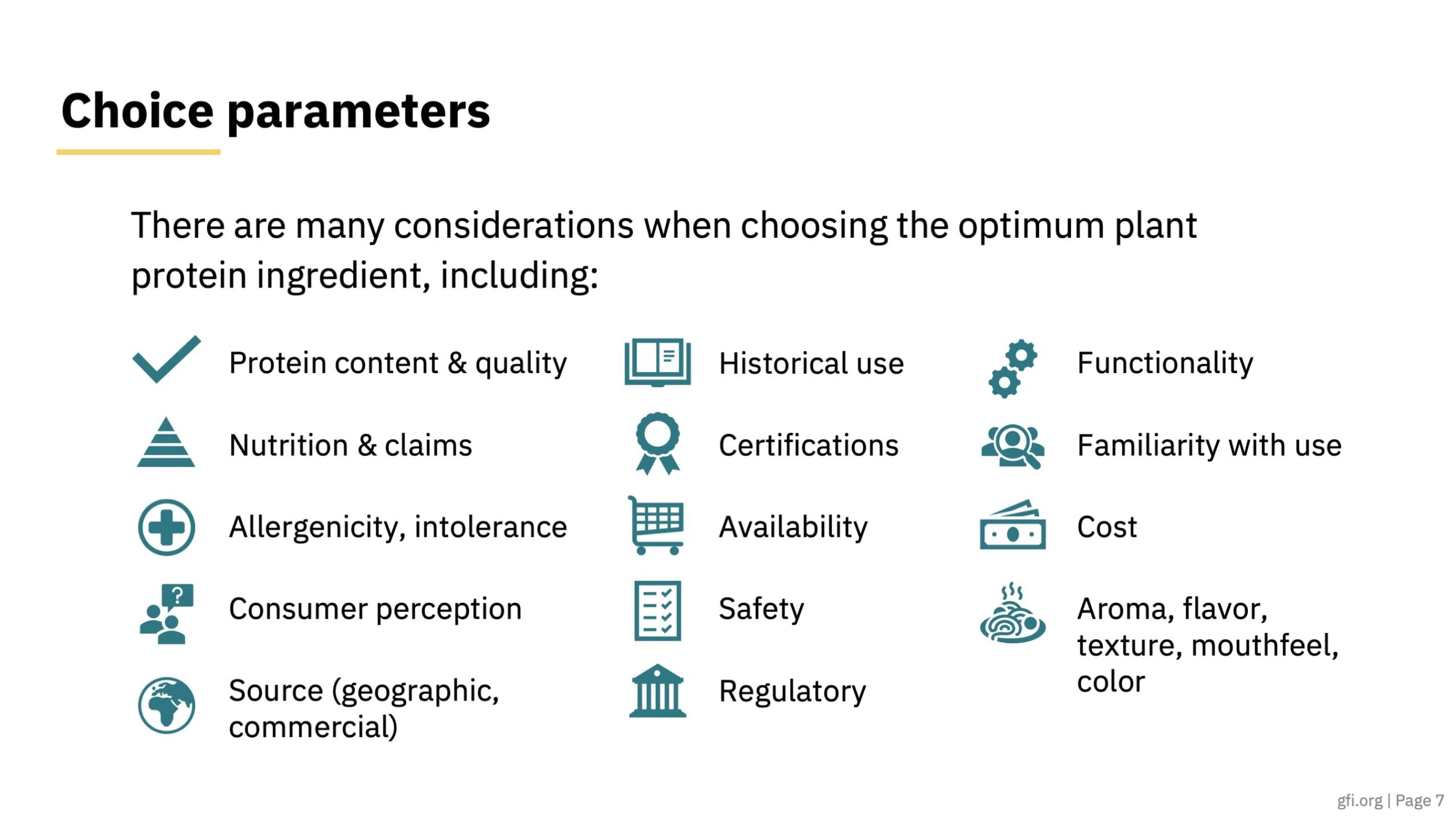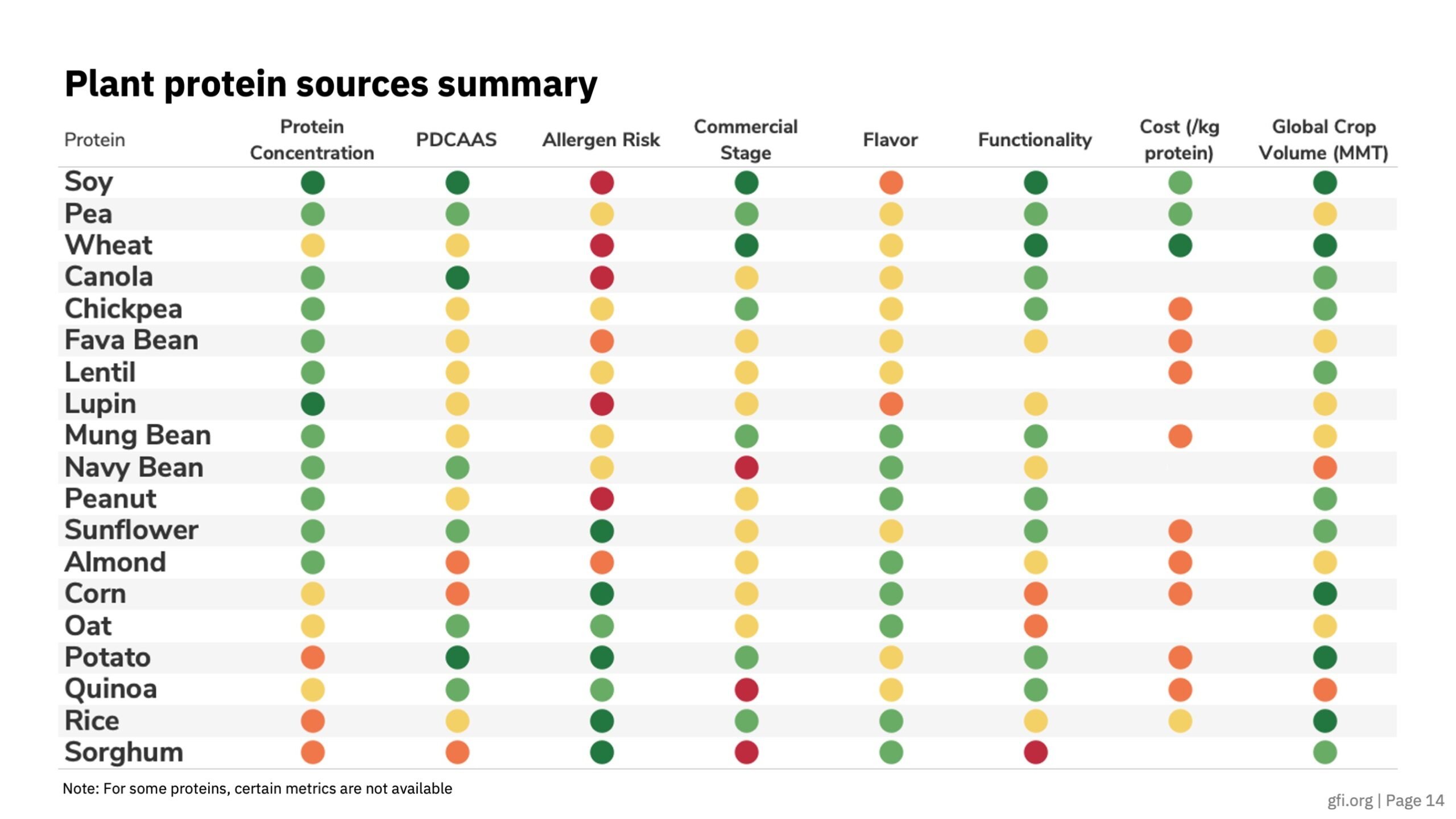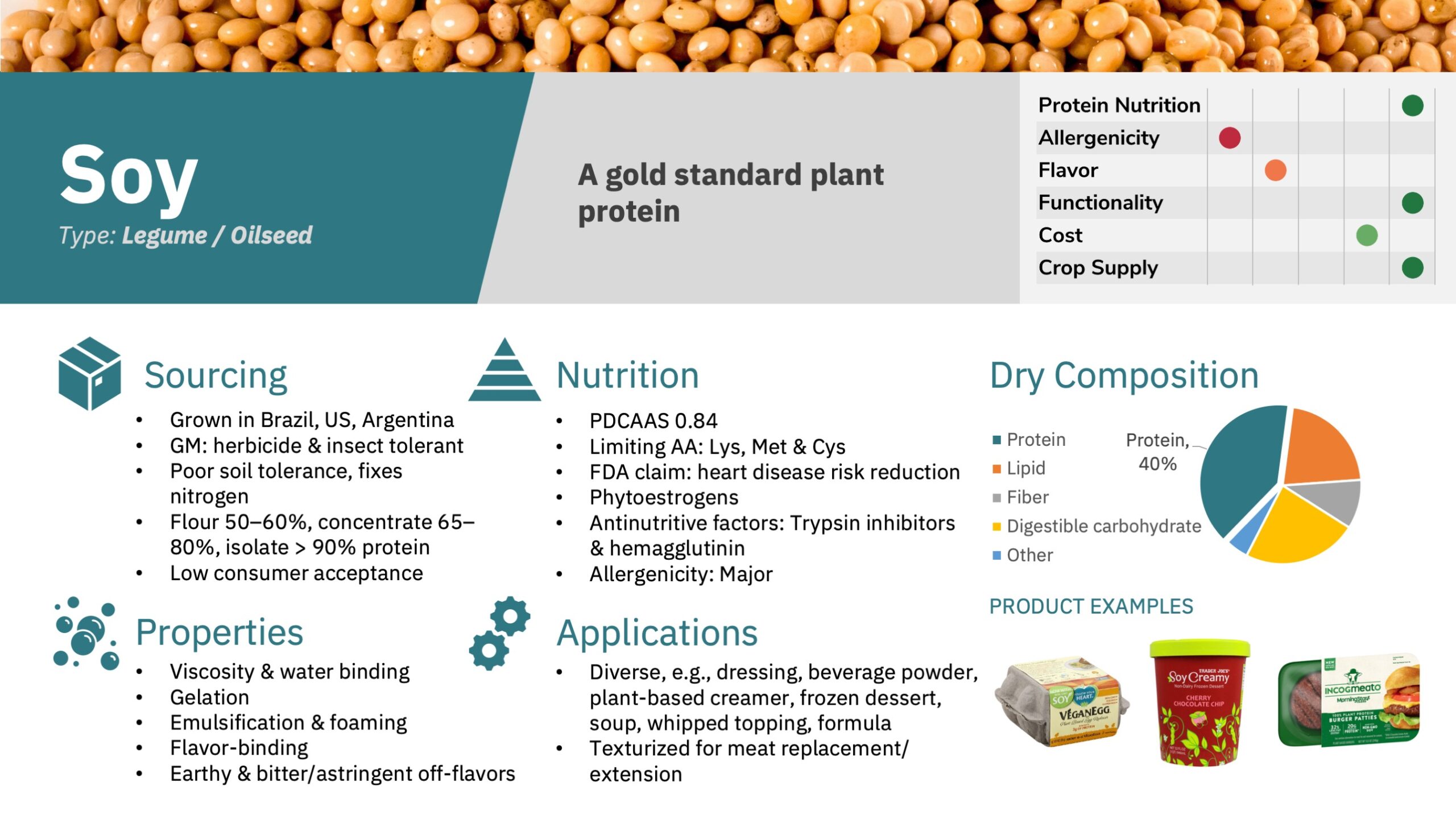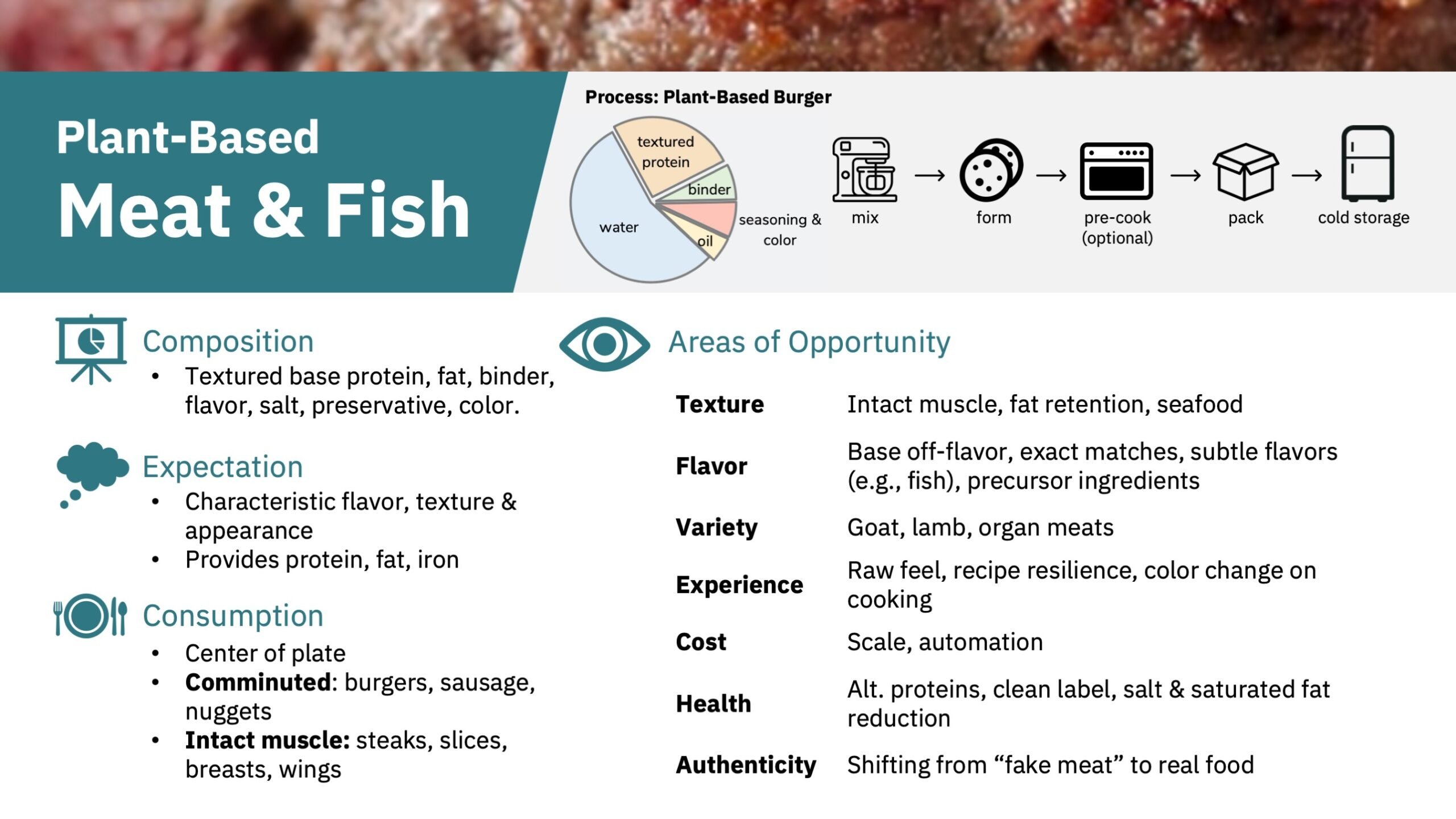
Plant Protein Primer
Our Plant Protein Primer helps manufacturers compare plant protein sources on key attributes like nutrition, functionality, price, and sourcing. It includes profiles of major and emerging plant protein sources, combination and processing strategies, and consumer perceptions.
Save this resource
About this resource
With consumer demand of plant-based products continuing to grow rapidly, more plant protein sources are being explored for applications in plant-based meat, egg, and dairy products. To support the production of products that meet consumer sensory and price requirements, the Plant Protein Primer consolidates information on plant protein nutrition, functionality, price, availability and sourcing, other key metrics.
Inside the report
- A basic overview of plant proteins, processing, and choice parameters
- Profiles of 19 plant protein sources, including a summary comparing these sources on nutrition, functionality, price, flavor, and sourcing
- A quick glance at 25 additional plant protein sources
- Strategies for combining different plant proteins
- Consumer perceptions of plant proteins
- An overview of processing plant proteins, including production profiles for major product categories
- Glossary and FAQs
Watch the webinar
GFI and special guest Chris Gregson of Greenstalk Food Consulting discuss the key characteristics of plant protein sources for alternative protein end products. The webinar covers an overview of the Plant Protein Primer and how to use it, as well as the landscape of major and emerging plant protein sources, processing considerations, and consumer perceptions.

Related resources

The science of plant-based meat
Learn about the science of plant-based meat. Discover resources and research on the latest technological developments and key scientific questions.

Plant-Based Meat Manufacturing Guide
Learn about plant-based meat manufacturing by extrusion and explore directories of ingredients, facilities, and co-manufacturers.

Consumer insights
Understand alternative protein consumer segments, demographics, adoption, motivations, and perceptions.




